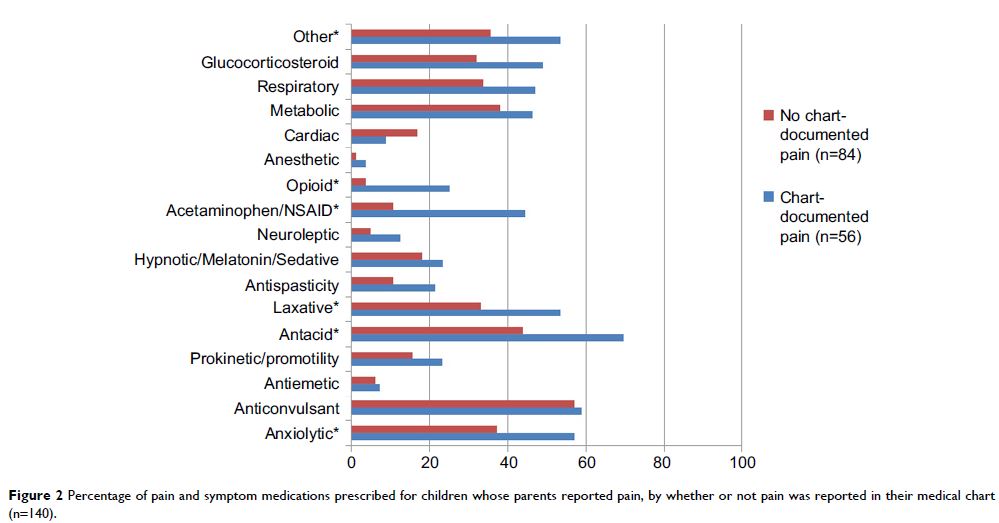9 0 5 7 8
论文已发表
注册即可获取德孚的最新动态
IF 收录期刊
- 2.6 Breast Cancer (Dove Med Press)
- 3.9 Clin Epidemiol
- 3.3 Cancer Manag Res
- 3.9 Infect Drug Resist
- 3.6 Clin Interv Aging
- 4.8 Drug Des Dev Ther
- 2.8 Int J Chronic Obstr
- 8.0 Int J Nanomed
- 2.3 Int J Women's Health
- 3.2 Neuropsych Dis Treat
- 4.0 OncoTargets Ther
- 2.2 Patient Prefer Adher
- 2.8 Ther Clin Risk Manag
- 2.7 J Pain Res
- 3.3 Diabet Metab Synd Ob
- 4.3 Psychol Res Behav Ma
- 3.4 Nat Sci Sleep
- 1.9 Pharmgenomics Pers Med
- 3.5 Risk Manag Healthc Policy
- 4.5 J Inflamm Res
- 2.3 Int J Gen Med
- 4.1 J Hepatocell Carcinoma
- 3.2 J Asthma Allergy
- 2.3 Clin Cosmet Investig Dermatol
- 3.3 J Multidiscip Healthc

Pain reporting and analgesia management in 270 children with a progressive neurologic, metabolic or chromosomally based condition with impairment of the central nervous system: cross-sectional, baseline results from an observational, longitudinal study
Authors Friedrichsdorf SJ, Postier AC, Andrews GS, Hamre KES, Steele R, Siden H
Received 28 March 2017
Accepted for publication 2 June 2017
Published 31 July 2017 Volume 2017:10 Pages 1841—1852
DOI https://doi.org/10.2147/JPR.S138153
Checked for plagiarism Yes
Review by Single-blind
Peer reviewers approved by Dr Amy Norman
Peer reviewer comments 2
Editor who approved publication: Dr Katherine Hanlon
Abstract: Little is known about the prevalence, characterization and treatment of
pain in children with progressive neurologic, metabolic or chromosomal
conditions with impairment of the central nervous system. The primary aims of
this study were to explore the differences between parental and clinical pain
reporting in children with life-limiting conditions at the time of enrollment
into an observational, longitudinal study and to determine if differences in
pain experiences were associated with patient- or treatment-related factors.
Pain was common, under-recognized and undertreated among the 270 children who
enrolled into the “Charting the Territory” study. Children identified by their
parents as experiencing pain (n=149, 55%) were older, had more comorbidities
such as dyspnea/feeding difficulties, were less mobile with lower functional
skills and used analgesic medications more often, compared to pain-free
children. Forty-one percent of children with parent-reported pain (21.8% of all
patients) experienced pain most of the time. The majority of clinicians (60%)
did not document pain assessment or analgesic treatment in the medical records
of patients who were experiencing pain. Documentation of pain in the medical
record was positively correlated with children receiving palliative care
services and being prescribed analgesics, such as acetaminophen, nonsteroidal
anti-inflammatory drugs and opioids, as well as the adjuvant analgesics
gabapentin and amitriptyline.
Keywords: pediatric palliative care, hospice, neuropathic pain, palliative,
life-limiting
